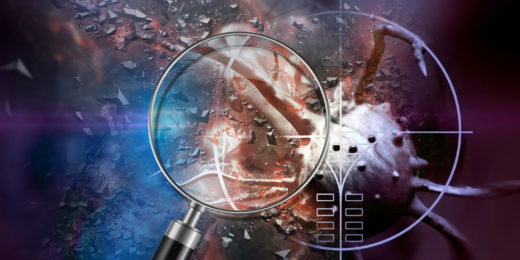Scientists at Stanford University have developed a retinal prosthesis with five times the resolution of the most advanced prosthetics currently used in clinical studies. By redesigning the electric circuitry of an existing prosthesis, researchers were able to match the natural vision of rats.
The implantable device, which was described in a Nature Communications article that published in November, was developed to restore vision lost through age-related macular degeneration. The condition damages a type of cell in the retina called photoreceptors, which convert light to signals that go to the brain. This degeneration is among the leading causes of vision loss in the U.S. and generally affects people older than 50, reducing their ability to recognize faces, read and drive.
Results from a clinical trial that tested an earlier version of the implant are the best in the field, according to Daniel Palanker, PhD, a professor of ophthalmology and the senior author of the study. "Our implant provided not only the highest resolution -- it also shaped vision rather than just light sensitivity," he said. Now, after successfully testing the new implant in rats, the team is optimizing it for clinical trials.
Bing-Yi Wang and Zhijie Chen, graduate students in physics and in electrical engineering, are the lead authors of the publication.
The design
The prosthetic has two main components: a 2-millimeter implant and augmented-reality glasses. A camera on the glasses captures the world around the patient and processes the images. The glasses then project those images into the eye. The implant, which is made of special pixels that capture light and convert it to electrical currents, sends those currents to stimulate the retinal neurons. Those neurons then propagate the information to the brain as visual inputs.
That's a simple explanation, but technically speaking, there's quite a bit going on. The glasses use invisible near-infrared light to activate the implant at the back of the eye. Software in the glasses regulates the light emission, properly stimulating the retinal neurons to elicit the right signals that the brain perceives as visual patterns.
"The implant is wireless -- the pixels work like solar panels," Palanker said. They don't need an external power supply to convert light into electrical current.
Clinical results with the first-generation implant demonstrated prosthetic vision with acuity up to 20/440. That's enough to read large fonts, but it's still worse than 20/400 -- the threshold at which someone is considered legally blind. This new implant, the team hopes, will change that.
Restoring vision at higher resolution
If the new implant works in humans as well as it did in rats, Palanker said, it would yield acuity of about 20/80 -- much better than the current clinical results, but not quite 20/20 vision. (Normal, or 20/20, vision describes what someone without any vision impairment can see 20 feet away. Someone with 20/80 vision sees at 20 feet what the visually unimpaired person sees at 80 feet.) For comparison, in California, 20/40 vision is needed to legally drive.
What's more, the image processing via augmented-reality glasses is tunable. Researchers can adjust the signal sent from the glasses to the implant to effectively dial up the strength, contrast, resolution and magnification of the prosthetic's signal in prospective patients.
Palanker envisions that surgeons will use implants of different sizes, depending on the extent of vision loss in a patient. Clinical trials of the new chip may start in about two years, Palanker said. "With this implant, we hope to restore vision at the level sufficient for comfortable reading and for face recognition, and thus alleviate the vision loss in patients blinded by retinal degeneration."
Photo by your123






